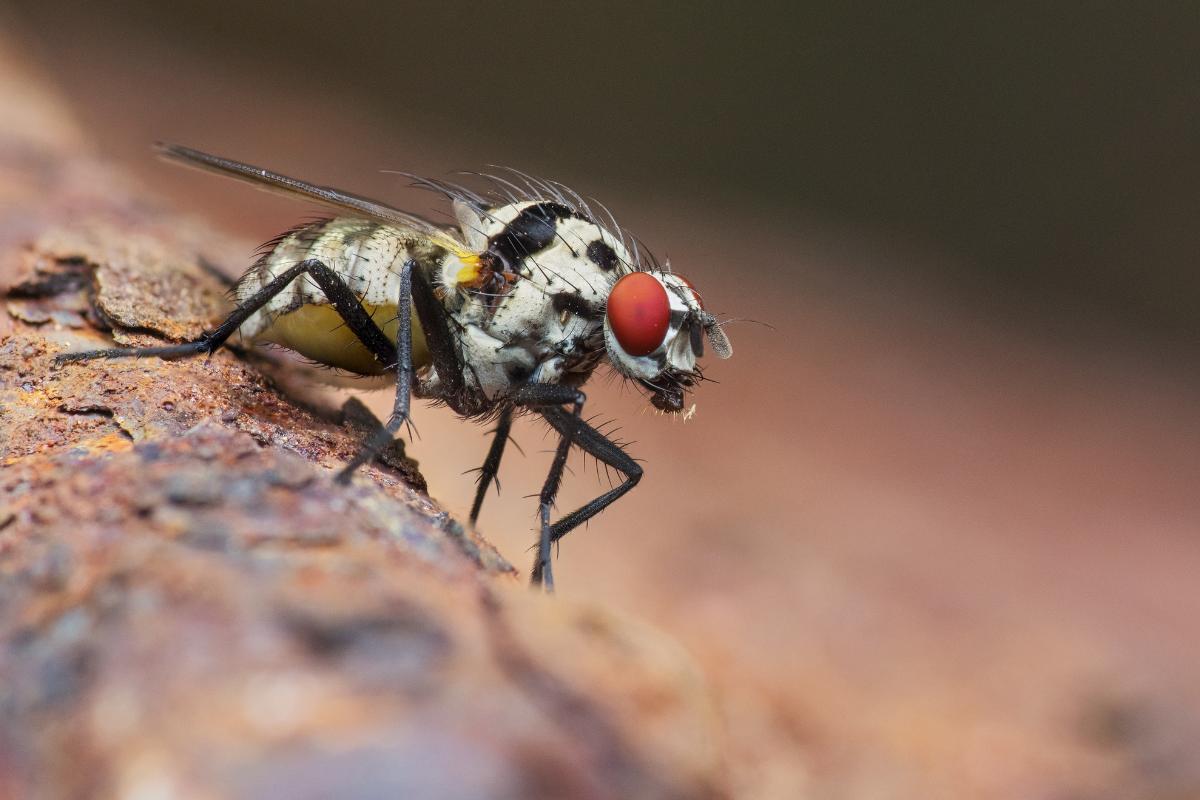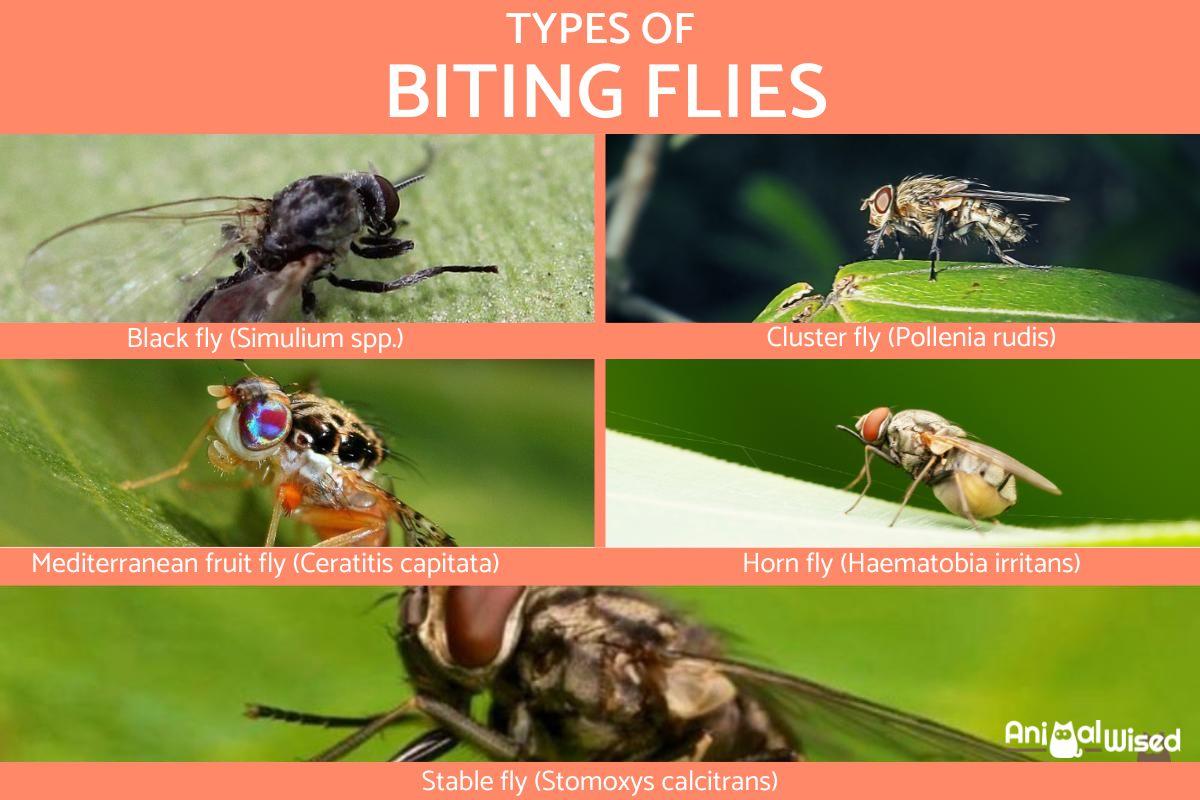Do Flies Bite Humans?


Diptera is a fascinating group of insects encompassing thousands of species, including flies, among others. Flies exhibit incredible diversity and are found across the globe. It's important to note that flies do not possess teeth, which means they are unable to bite. Instead, they have developed various feeding mechanisms that involve sucking. Different fly species employ distinct feeding strategies depending on their group or family.
The following AnimalWised article answers the question of whether flies bite humans. Furthermore, it covers the reasons behind fly bites, common symptoms, and treatment.
Do flies bite humans?
Among the vast array of fly species documented, it is fortunate that only a fraction of them have a propensity for biting humans. Flies belong to the order Diptera, which is one of the largest orders of insects, comprising approximately 160,000 described species.
The majority of fly species have different dietary preferences. Many of them sustain themselves by consuming decaying plant matter, discarded food waste, or even animal excrement. Furthermore, certain fly species derive nourishment from the sweet nectar of flowers, playing a role in pollination. Thus, while biting flies exist, it is reassuring to know that the vast majority of flies have alternative food sources and ecological roles.
Flies possess a mouth apparatus called a proboscis that enables them to feed. The proboscis is a specialized structure consisting of several components that work together for the fly's feeding process.
The proboscis typically functions as a sucking organ, allowing flies to extract liquid or semi-liquid food. However, it's important to note that the proboscis structure can vary among different fly species. While some flies have a proboscis specifically adapted for sucking, others have a proboscis that combines both biting and sucking capabilities.
Are mosquitoes flies?
Contrary to popular knowledge, mosquitoes belong to the fly family, scientifically known as Diptera. Among the various fly species, mosquitoes stand out with their distinctive and potentially lethal bites. Remarkably, mosquitoes hold the unenviable title of being the deadliest creatures on Earth, surpassing all other animals combined in terms of human fatalities.
Mosquitoes exhibit a range of proboscis characteristics that are influenced by their feeding habits and preferences. Some mosquito species have a relatively short and wide proboscis, enabling them to feed on a variety of food sources, including nectar, plant juices, and other liquids.
On the other hand, there are mosquito species with elongated and slender proboscises, which they use to pierce the skin of animals and feed on blood. It is worth noting that mosquitoes do not seek blood meals for their own survival, but rather to optimize the process of laying their eggs more efficiently. This blood-feeding adaptation is primarily found in female mosquitoes and is essential for their reproductive cycle.
Why do flies bite?
Flies, being opportunistic feeders, are attracted to a wide range of food sources. Some flies, like fruit flies, are attracted to fermenting fruits, while others are drawn to decaying organic matter, such as carcasses or compost. Houseflies, for example, are notorious for their affinity for garbage and feces. They are equipped with specialized chemoreceptors that help them locate these food sources.
When a fly lands on its preferred food, it extends its proboscis and uses it to probe the surface, seeking out liquid or semi-liquid substances. The proboscis acts as a straw-like structure, allowing the fly to suck up the desired fluids. Flies with a piercing-sucking proboscis, such as mosquitoes, use it to penetrate the skin of their hosts and access blood vessels for their meals.
Unlike animals with teeth that can chew and grind solid food, flies lack the ability to chew. Instead, they have evolved to consume food in a liquid or semi-liquid form. For example, if a fly lands on solid food, it will regurgitate digestive enzymes onto the food, which start breaking it down externally. Once the food becomes sufficiently liquefied, the fly can suck it up through its proboscis. This process is called external digestion.
While flies do not bite in the same way that animals with teeth do, they can still cause annoyance and minor discomfort. When a fly lands on human or animal skin, it may probe with its mouthparts, searching for moisture or salts.
It's important to note that flies can carry and transmit diseases and bacteria. They often come into contact with unsanitary substances before landing on surfaces, including human skin. Therefore, it is advisable to avoid direct contact with flies and to maintain good hygiene practices, such as washing hands thoroughly after potential exposure to flies or contaminated areas.
You might be interested in this other article, where we explain why flies and other insects are attracted to light.
Types of biting Flies
While most fly bites are generally harmless or result in minor skin irritation and redness, it's important to note that individuals with allergies may experience more severe pain and discomfort when bitten. While it is not feasible to provide an exhaustive list of all fly species that do not bite (as the majority do not bite humans), we will focus on discussing some common biting fly species:
- Black fly (Simulium spp.): black flies are well-known for their biting behavior and are notorious pests. The females require a blood meal to support their reproductive processes. They can bite humans and animals, causing discomfort, itching, and in some cases, severe allergic reactions. Additionally, certain species of black flies can transmit parasites like the Onchocerca volvulus worm, which causes a disease called onchocerciasis, or river blindness.
- Cluster fly (Pollenia rudis): the adult cluster flies are actually herbivorous, but their larvae have a unique feeding behavior. The female loft flies bite worms, such as earthworms, and deposit their eggs inside the worm's body. The larvae then consume the worm as a source of nutrition for their development.
- Mediterranean fruit fly (Ceratitis capitata): The Mediterranean fruit fly primarily feeds on fruits. However, the female uses a biting mechanism to puncture the fruit's skin and lay her eggs inside. This behavior enables the larvae to develop within the fruit, causing damage and potentially leading to crop loss.
- Horn fly (Haematobia irritans): Horn flies are blood-feeding pests that primarily infest cattle. They are known for their preference to stay on the host animal after biting, feeding on their blood for extended periods. Horn flies can cause irritation, reduce productivity, and lead to economic losses in livestock production.
- Stable fly (Stomoxys calcitrans): The stable fly is another biting species that feeds on the blood of humans, livestock, and other animals. It resembles the common housefly, but has mouthparts adapted for piercing the skin. Stable flies are capable of transmitting parasites and pathogens, and their bites can be painful and irritating.
Be sure to read this other article, where we explain the reason some flies rub their paws.

How to know if a fly has bitten you?
Symptoms of fly bites can vary depending on the species of fly, individual sensitivity, and the specific circumstances of the bite. However, common symptoms associated with fly bites may include:
- Itching: fly bites often cause itching at the site of the bite. This can range from mild to intense itching, depending on the person's reaction and the type of fly involved.
- Redness and swelling: fly bites can cause localized redness and swelling around the bite area. The size and severity of the reaction may vary.
- Pain or discomfort: some fly bites can be painful or cause a stinging sensation, especially if the fly has mouthparts adapted for piercing the skin.
- Skin irritation: bites from certain flies may lead to skin irritation, such as the formation of small bumps, welts, or a rash in the affected area.
- Inflammation and infection: excessive scratching of fly bites can lead to inflammation and potential secondary bacterial infections.
- Allergic reactions: in individuals with allergies, fly bites can trigger more severe reactions, including intense itching, swelling, hives, or even anaphylaxis (a severe allergic reaction requiring immediate medical attention).
It's important to note that some fly species are capable of transmitting diseases, and if you experience symptoms beyond typical localized reactions, such as systemic symptoms or signs of infection, it's advisable to seek medical attention.
What to do if a fly bites you?
As we have discussed, certain fly bites can pose serious dangers due to the introduction of eggs into humans or animals, leading to larval development within the host. Additionally, some flies act as carriers of disease-causing parasites.
If you are bitten by a fly, it is crucial to take immediate action to minimize potential risks, such as:
- Start by thoroughly disinfecting the bite area with an antiseptic solution.
- Afterward, closely monitor the area for any signs of inflammation, increasing redness, or persistent itching.
- If you notice such symptoms developing or worsening over time, it is important to seek medical attention for a thorough evaluation.
Furthermore, it is essential to stay informed about the presence of dangerous fly species in your region that are known carriers of disease-causing parasites. Local health centers or relevant authorities often provide valuable information regarding these specific flies in your area.
By being proactive and well-informed about the risks associated with specific fly species in your locality, you can take appropriate measures to safeguard your well-being.
Be sure to read this other article, where we explain if the commonly known as the blue bottle fly is dangerous.
If you want to read similar articles to Do Flies Bite Humans?, we recommend you visit our Facts about the animal kingdom category.
- Animal Diversity Web. (2020). Available at: https://animaldiversity.org
- Mehlhorn, Heinz (2001). Encyclopedic Reference of Parasitology: Biology, Structure, Function . Springer Science & Business Media. p. 310. ISBN 978-3-540-66819-0.: https://books.google.co.ve/books?id=9uGQnKdxhyUC&pg=PA310&redir_esc=y#v=onepage&q&f=false
- Carles-Tolrá, M. and Andersen, H. (2015). Order Diptera . Available at: http://sea-entomologia.org/IDE@/revista_63.pdf
- RAE (2023). bite . Available at: https://dle.rae.es/morder
- UCV (2009). entomology . Faculty of Agronomy, Department of Agricultural Zoology. Available at: http://www.ucv.ve/fileadmin/user_upload/facultad_agronomia/Imagenes/Entomologia_2009_-_III_Unidad_-_13ra_Clase_Diptera.pdf






